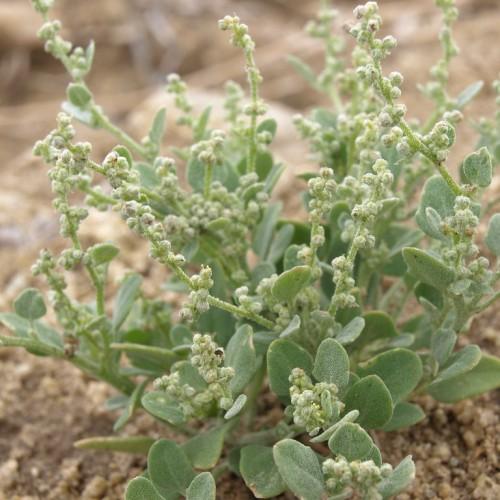
Hoary Goosefoot
Chenopodium incanum
Also Known As - Measly GoosefootWatering:
Minimal
Hardiness Zone:
Flowers:
Flowers
Sun:
full sun,part shade
Fruits:
Fruits Ready In Fall
Leaf:
Yes
Growth Rate:
Low
Drought Tolerant:
Yes
Salt Tolerant:
Yes
Invasive:
Yes
Care Level:
Medium
watering
Fremont's Goosefoot prefers moist soil in order to thrive. It should be watered regularly so that the soil remains consistently moist but not soggy. Water deeply once every 1 to 2 weeks, depending on the conditions of the climate and soil in which it is planted. This allows for a good balance of water absorption while avoiding oversaturation that can cause root rot. More frequent watering may be required in hotter climates, and it is important to check for soil dryness before watering. If the soil does not feel damp when checked with a finger, it is time to water.
sunlight
Fremont's Goosefoot (Chenopodium fremontii) thrives in full sunlight, and ideally should get at least 8 hours of direct sunlight per day. In addition to this direct sunlight, the plant can also benefit from some indirect light throughout the day. This plant can become stressed in low light situations, so it is important to make sure it is getting enough sunlight. The greatest amount of sunlight should be received between 10am and 4pm, but any exposure to sunlight during the day should be beneficial for Fremont's Goosefoot.
pruning
Fremont's Goosefoot (Chenopodium fremontii) should be pruned around mid-springtime, immediately after the last frost. This will help prepare it for active growth which should take place just after pruning. Pruning should be done by removing dead wood, damage leaves, and any dead branches. In addition to this, some light trimming of the top of the plant to encourage bushier growth can also benefit the plant. In general, a good guideline is to remove no more than a third of the plant’s branches and foliage at 1 time to avoid shocking it.
